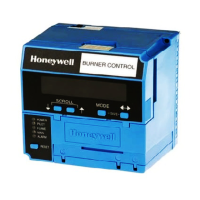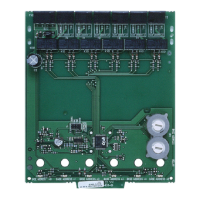INSTALLATION INSTRUCTIONS
SIL
3
Capable
RM7898A
7800 SERIES Valve Proving
Primary Relay Modules
APPLICATION
The RM7898 is a microprocessor-based integrated burner
control for automatically fired gas, oil or combination fuel
single burner applications. The RM7898 system consist of a
relay module, subbase, amplifier, and purge card. Options
include Keyboard Display Module (KDM), Personal Computer
Interface, Data ControlBus™ Module, remote display
mounting, Expanded Annunciator and Combustion System
Manager® Software.
Functions provided by the RM7898 include automatic
burner sequencing, flame supervision, system status
indication, system or self-diagnostics and
troubleshooting.
This document covers the following 7800 Series Relay
Modules:
RM7898A1000
RM7898A1018
RM7898A2000
RM7898A2018
The RM7898 provides unique functions to a standard
primary control.
As received, the RM7898 offers the following features:
• Interrupted pilot with 10 second pilot flame establishing
period.
• Main valve operation with 10 second MFEP.
• Pre-Ignition Interlock (POC) input.
• Shutter-driven output when appropriate amplifier is
selected (R7861A, R7886A, R7851C).
• Blinking Fault Code Power LED on safety shutdown.
RM7898A1018 offers early spark shutoff when flame is
sensed.
Available features when appropriate terminals are
energized:
• Intermittent pilot T8 (Terminal 19).
• Direct spark feature for Valve Proving System (VPS)
(Terminal 18).
• Valve Proving System function (Terminal 17).
• See “Appendix b - ignition options” on page 25 for
examples of 24 single or dual fuel system combinations
with or without using the Valve Proving feature.
Programmable features using the S7800A1142 Keyboard
Display Module (KDM) (not included):
• Postpurge time—(up to 60 minutes).
• Valve Prove System features, including:
—VPS test time
— When in burner sequence to conduct VPS time
(Never, Before, After, Both or Split):
NOTE: The S7800A1142 Series 5 or higher can be pro-
grammed for ModBus Communication. (See 65-0288
Spec Sheet.)
At commissioning time, the Valve Proving System may be
scheduled to occur at one of five different times:
1. Never—Device default as received; valve proving
does not occur. (Demand wired to Terminal 6.)
2. Before—Valve proving after standby and safe start
check, prior to ignition trials, concurrent with Pre-
Purge.
3. After—Valve proving occurs after the Run state
before the device goes to Standby, concurrent with
postpurge.
4. Both—Valve proving occurs at both times Before and
After noted above.
5.
Split—The Main Valve 2 (MV2) (high pressure) seat test
is performed at the Before time and the Main Valve 1
(MV1) (low pressure) seat test is performed during the
After time.
To perform Valve Proving, it must be commissioned and
Demand Input (Terminal 17) must be used.
The following assumptions apply when using the RM7898
Valve Proving testing.
Fig. 1. Valve Proving System—simplified diagram.
MV1
MV2
VP
SW.
M24161
OUTLET
INLET
1
CAUTION: VALVE ENERGIZING TIMING IS BASED ON HONEYWELL VALVE
OPENING TIMES OF 13 SECONDS MAXIMUM.
− FOR VALVES WITH TIMINGS GREATER THAN 13
SECONDS OR THOSE THAT DO NOT OPEN THE ACTIVE
VALVE WITHIN THE ENERGIZED TIME, A BYPASS
SOLENOID VALVE (1/4”, 120 VAC) IS REQUIRED TO
OBTAIN THE PROPER TEST PRESSURES.
− THE BYPASS VALVE WILL BE WIRED IN PARALLEL TO THE
VALVE IT IS BYPASSING (TERMINAL 9 FOR MV1 OR
TERMINAL 21 FOR MV2).
1



